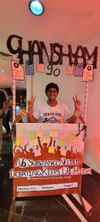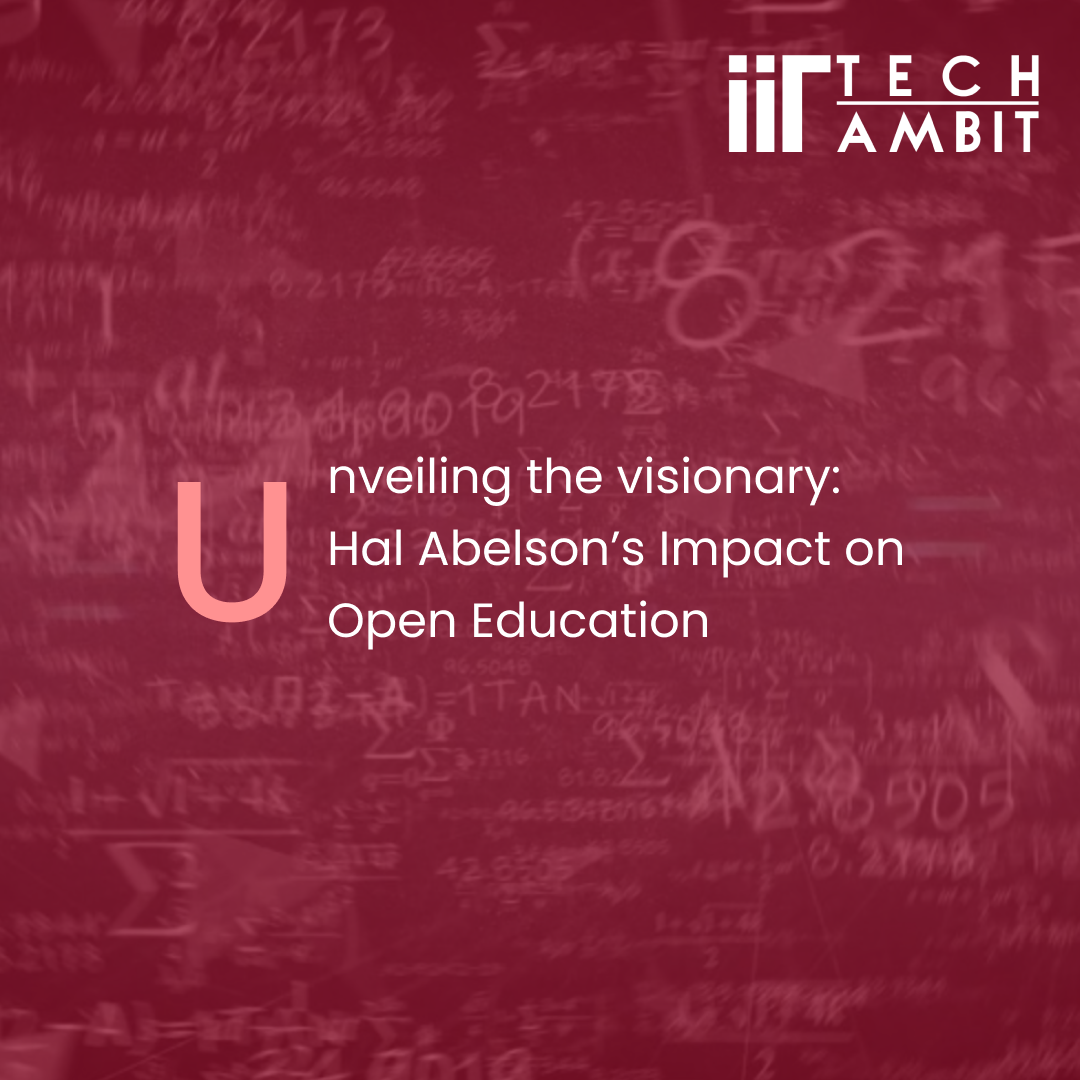The idea of this article stems from a remarkable encounter in the midst of a frantic search for a research internship, poring over profile after profile of great scientists, and mentally bracing for rejection even before sending out the application mail (a painfully relatable phenomena for most IITians around, I believe). That was when I came across the work of Professor Hal Abelson, of the Massachusetts Institute of Technology. The founder of MIT OpenCourseWare (OCW), Creative Commons, Free Software Foundation, and a wide array of other such noteworthy initiatives, Professor Abelson has dedicated his life to championing the noble cause of accessible education for all. But while MIT OCW is the go-to platform for video lectures for most of us, the man behind its inception often remains in the shadows.
Established in 2001, MIT OCW has gained universal recognition. Its website and YouTube channel have collectively garnered over 300 million lifetime visits. It stands as a historic institution, pivotal in revolutionizing the landscape of education.
History of the Internet and Open Access Education
As the internet grew popular worldwide with public forums and research databases, knowledge became more reachable. But even this newfound accessibility could not circumvent the financial barriers to a good education. In the fall of 1999, against this backdrop of evolving technological landscapes and educational challenges, MIT's Council on Educational Technology found itself at a critical juncture. Established by the co-chair Provost Robert Brown, the Council grappled with developing a strategic framework for MIT-wide initiatives in educational technology, setting priorities, and initiating programs.
Amid deliberations, the Strategy Group decided to enlist the expertise of an external consulting firm - McKinsey - to lead a comprehensive study to define and evaluate MIT’s strategy regarding the internet. Their recommendation, unveiled in the wake of their study, introduced the concept of "Forever-tech." This proposed platform aimed to create a lifelong extended community comprising faculty, staff, students, and alumni, fostering interaction both on and off campus. Furthermore, it envisioned the establishment of a continuing education program for alumni, facilitating the pursuit of advanced degrees and skills updates. This strategic move marked a pivotal moment for MIT, laying the groundwork for what would later evolve into the groundbreaking MIT OpenCourseWare initiative.
Professor Abelson explained that, at this time, many institutions had started the practise of recording regular lectures in classrooms which could be accessed as paid online lectures by people who were not affiliated with that institution. This made the suggestion to freely distribute lectures by MIT professors doubly intriguing. However, the committee ultimately decided in favor of this and in 2001, MIT launched a pilot website featuring 50 courses, followed by the official website release in 2003, offering an expansive catalog of 500 courses. The platform swiftly garnered public acclaim, positioning MIT as a trailblazer in open access education.
Creative Commons Licenses - Another breakthrough
However, to preserve its reputation and extend the accessibility of its videos, MIT faced a challenge in licensing. The conventional "All rights reserved" license was unsuitable for MIT's vision of public use and wide dissemination. Enter Hal Abelson's parallel project, the "Creative Commons" – a nonprofit organization founded by Hal Abelson and Lawrence Lessig. Creative Commons is dedicated to expanding the range of creative works available for legal use and sharing. Through Creative Commons licenses, MIT could permit the reproduction of its work as long as proper credit was given to the original author. This symbiotic relationship between MIT OCW and Creative Commons not only facilitated the preservation of MIT's educational materials but also fostered a culture of open sharing and collaboration.
As of 2019, the impact of Creative Commons has been profound, with "nearly 2 billion" works licensed under its various licenses. Prominent platforms such as Wikipedia, Flickr, YouTube, DeviantArt, and Wikimedia Commons have embraced Creative Commons licenses, allowing for the legal sharing and building upon creative works. A myriad of educational and collaborative platforms, including familiar, everyday names like Stack Exchange, MDN, Internet Archive, Khan Academy, LibreTexts, OpenStax, WikiHow, TED, OpenStreetMap, and many others, have incorporated these licenses into their frameworks. The influence of Creative Commons extends far and wide, contributing to the ethos of open knowledge sharing across diverse online communities.
The Real Meaning of Free Software
Hal Abelson's commitment to the democratization of education has been a longstanding endeavor, dating back to his role as a founding member of the Free Software Foundation. Established in 1985 as a non-profit corporation dedicated to supporting free software development, the Foundation's mission reflects a philosophy articulated by Richard Stallman. Prof. Abelson explained to Tech Ambit, "Richard Stallman, who started all of this, has a saying - free software means free as in free speech, not as in free beer.”
This is the essence of the Free Software Foundation's principles, emphasizing the freedom of use without restriction, transcending commercial considerations. This commitment to the fundamental ideals of open access aligns with Prof. Abelson's broader mission to make educational resources accessible to all, as evidenced by his pivotal role in the development of MIT OpenCourseWare and advocacy of Creative Commons licenses. In both instances, his contributions reflect a tireless dedication to breaking down barriers and fostering a culture of inclusive knowledge-sharing.
When addressing the issue of language barriers and the accessibility of resources for non-English speakers, Hal Abelson responded candidly to the democratic essence of the MIT OpenCourseWare initiative, emphasizing that the freedom to contribute and translate is open to everyone. In doing so, he challenges the notion that MIT should exclusively undertake translations, urging collaboration and contributions from diverse communities globally. However, he also emphasizes MIT's control over the use of its name to maintain quality standards and accuracy in translations. This means that even though any individual can translate a video, MIT cannot endorse it, not without an exclusive agreement stating the same. This stance reflects MIT's commitment to democratization, without compromising on quality.
Children - The Little Known Stakeholders of Development
In his closing remarks, Hal Abelson addressed the overarching theme of democratization and extended the conversation to a realm close to his heart – empowering children through technology. Among his numerous initiatives, MIT App Inventor stands out as a block-based visual programming platform, offering an accessible avenue for creating Android apps effortlessly, even for those with no prior programming experience.
This initiative goes beyond just children; countless individuals worldwide possess innovative app ideas that could potentially revolutionize the world. However, many are deterred by the belief that their app remains a mere dream, unlikely to materialize due to a lack of technical expertise. Abelson's MIT App Inventor bridges this gap, offering a solution that empowers individuals to turn their app concepts into reality, regardless of their technical proficiency.
In his own words, “The thing that people need to understand about the technology we're talking about here is also something that is open to 13-year-old children. Now, they can create things, too. I mean, right now, there is a tremendous emphasis on startup companies, and you can get funding for it, and all kinds of things. But soon, the same thing is going to be true for everyone. And that includes children. So, the emphasis of my project is very much - how do you make stuff such that kids can do it too? And I think people need to remember that when you talk about democratization, it also includes children.”
Conclusion
During our interview with Hal, we posed several questions to gain deeper insights into his work and to explore his perspectives on prevalent issues in the contemporary world. Abelson's closing remarks summarize it perfectly - his view is that of broadening the scope of democratization, emphasizing the inclusive nature of technological empowerment, and extending its benefits to even the youngest members of society. He underscores the potential for children, as well as adults, to actively engage in creating and modifying technological advancements, advocating for a future where democratization is not just a concept but a reality accessible to all, regardless of age.
In the modern era, the Developing Global South is striving to bridge the gap with the Developed West in various fields. Despite progress, a considerable journey lies ahead. A notable trend is the influx of individuals from less developed regions migrating to economically advanced countries like the US, UK, and Canada, primarily driven by abundant educational opportunities. However, economic constraints still hinder educational pursuits for many. Initiatives like MIT OCW play a crucial role in breaking these barriers, providing free access to educational resources and fostering a more inclusive global education approach.


